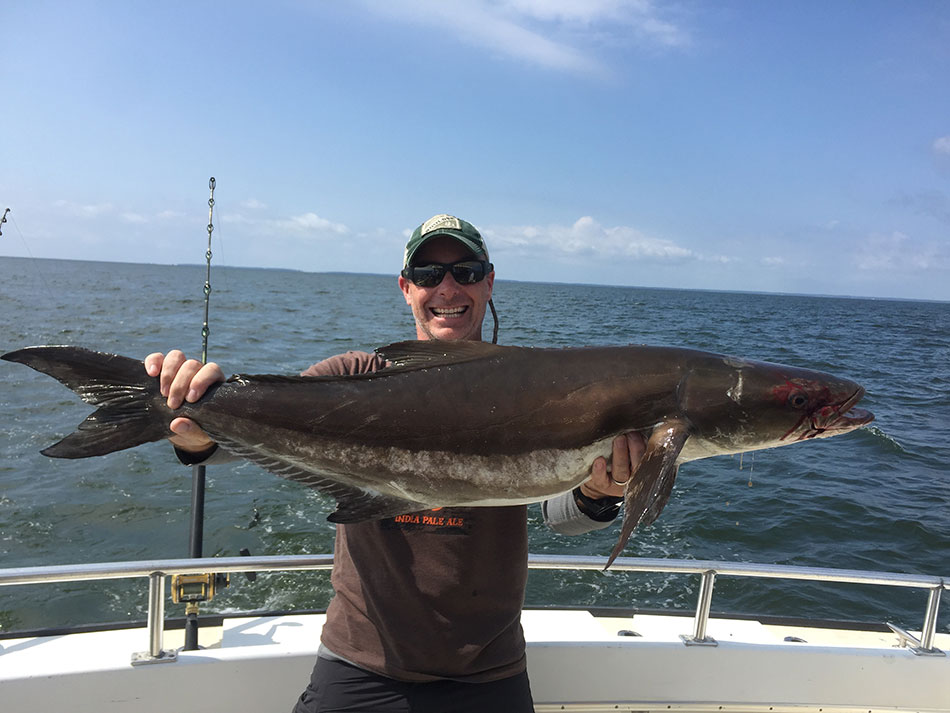
“The (federal) initiative with the catchy acronym “MRIP” seeks to help remedy the hopelessly flawed Marine Recreational Fisheries Statistics Surveys (MRFSS), NOAA Fisheries’ current vehicle to snag recreational fishing data. Sport anglers have roundly complained that the clunky MRFSS is woefully inaccurate. Think of a square block with spikes trying to fit in a round hole. With the phase-in of MRIP over the next several years, fishery managers expect to gain a better handle on who is fishing and for what. Armed with better information, sport fishermen are banking on a more equitable allocation of fisheries resources.”
My brain hurts just thinking about the fact that I wrote the above paragraph fifteen years ago in a column about encouraging progress to better manage recreational fisheries. Re-reading it today, man, do I ever sound like a doe-eyed optimist.
Sure, hindsight is 20/20. But what made me think that NOAA Fisheries could finally get a handle on the impacts and benefits that the sport fishing community has on our public marine fisheries?
Not sure what I’m rambling on about? Let me remind you, gentle reader, that MRIP is shorthand for the Marine Recreational Information Program, the federal agency’s NOAA hallmark program launched nearly twenty years ago. It was supposed to provide accurate estimates of recreational fishing catches and trips that occur from Maine to Mississippi and Hawaii. Or at least that was what we were told.
According to NOAA Fisheries, MRIP data comes from two different components:
- Dockside interviews administered by state partners that gather information on angler catch rates (i.e., number, types and sizes of fish caught); and
- A mail survey administered by NOAA known as the Fishing Effort Survey (FES), which is used to estimate fishing effort (i.e., the number of fishing trips that occur). The FES component is driven by angler recall, a fancy word for memory.
As it turns out, however, NOAA Fisheries main vehicle to capture sport fishing data may be flawed, and likely fatally. By the feds own admission, it has been overestimating recreational catch and effort data by as much as 40 percent. Think about that – that’s not just a rounding error. Not even close.
This colossal blunder affects management plans for numerous important game fish anglers who spend their time and money pursuing. In fact, sport fishing generates billions of dollars of economic activity vital to coastal communities every single year. The Chesapeake has hundreds if not thousands of these localities, ranging from small villages to large towns and cities.
Some of these fish impacted by the flawed data are in need of conservation while other fish stocks are healthy. It is essential to differentiate which is which, so that appropriate resources can be directed to species in need while anglers are given better – or how about just fair – access to those fish that are in good shape.
Moreover, it is the third time in more than a dozen years that serious issues have been uncovered in NOAA’s recreational fishery data program. I truly do not know where to begin to explain this latest snafu, except to echo what no doubt countless tackle business owners, pro guides and millions of sport anglers and marine fishery conservationists are probably saying: “I told you so!”
Ted Venker, vice president for Coastal Conservation Association, nailed it with his assessment: “Yet another major revision to the federal recreational data collection system is upon us, and it should bring a realization that NOAA is just not capable of doing this job. At best we are looking at several more years of questionable revisions, recalculations, and recalibrations based on a suspect data system that has never proven it can produce accurate information. This is no way to manage a public resource. It would be irresponsible to continue down this road rather than exploring and supporting state-based options to better manage the recreational sector wherever feasible.”
To be sure, it is a complicated mess that may take years to unravel. That’s why I also encourage you to read the entire white paper written by CCA and four other of the nation’s leading recreational fishing and marine conservation organizations.
Included are many salient recommendations, yet for me this statement pretty much sums up the task at hand: “The MRIP recreational catch and effort data collection system needs to be fundamentally reshaped to meet the needs of stock assessments, the precise management requirements of federal law (Magnuson Stevens Act) and the stakeholders.”
NOAA Fisheries has had more than enough chances to get this right. They need to stop “explaining” the problem, wasting our time and money and work with the angling community to just fix it. And they need to do it now. Alternatives already exist. Lead, follow or get out of the way.
It’s A Wrap! Miss An Episode of Chesapeake Perspective? Catch it Here!
CCA and its partners wrapped up another highly successful season of Chesapeake Perspective. Season 2 featured three thought-provoking seminars designed to spark innovative and move forward solutions to some of the most pressing issues confronting Chesapeake recreational anglers.
Missed the lively discussion by experts from the Chesapeake and Atlantic region? No worries – view all six episodes on YouTube.
